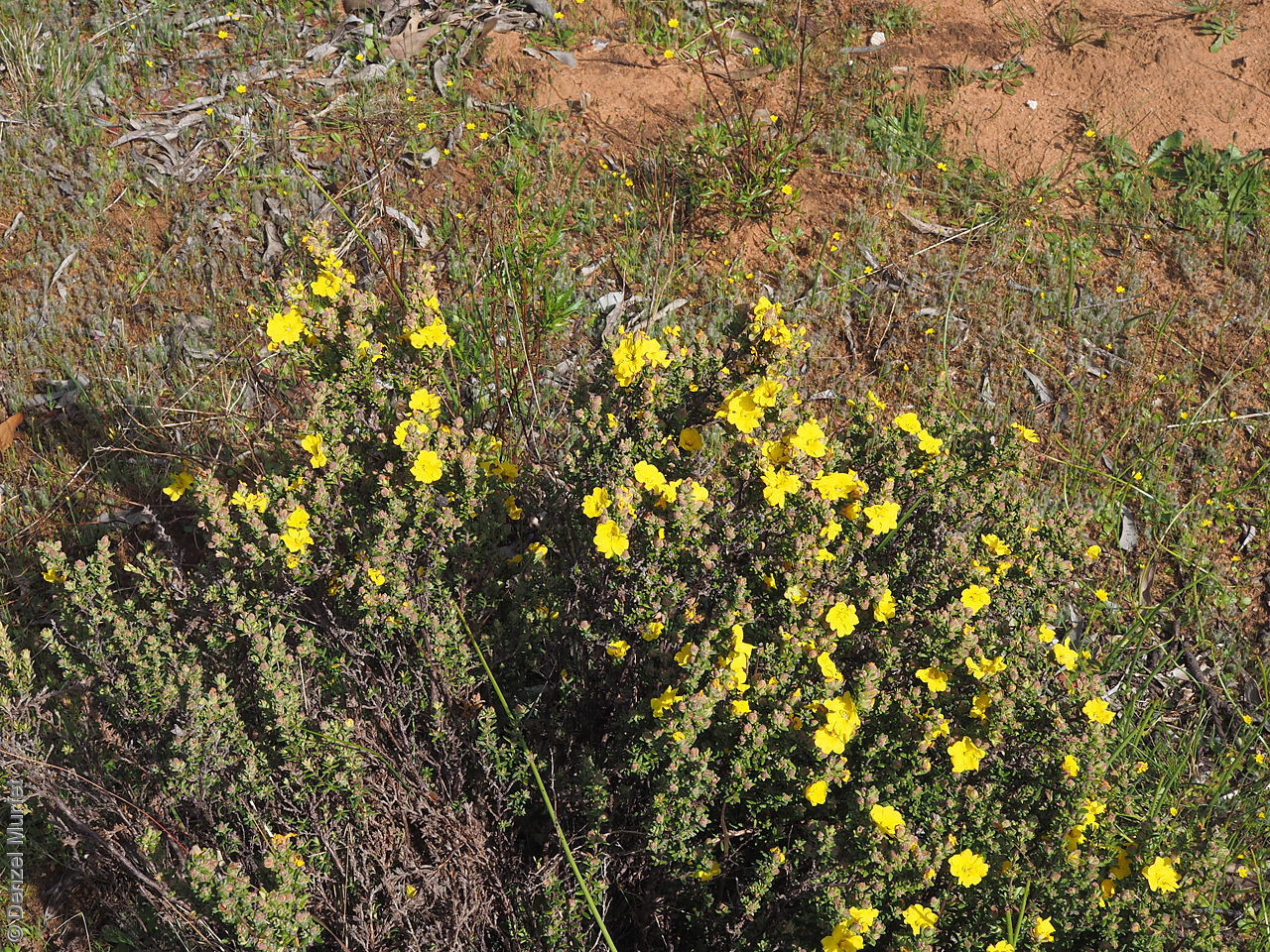
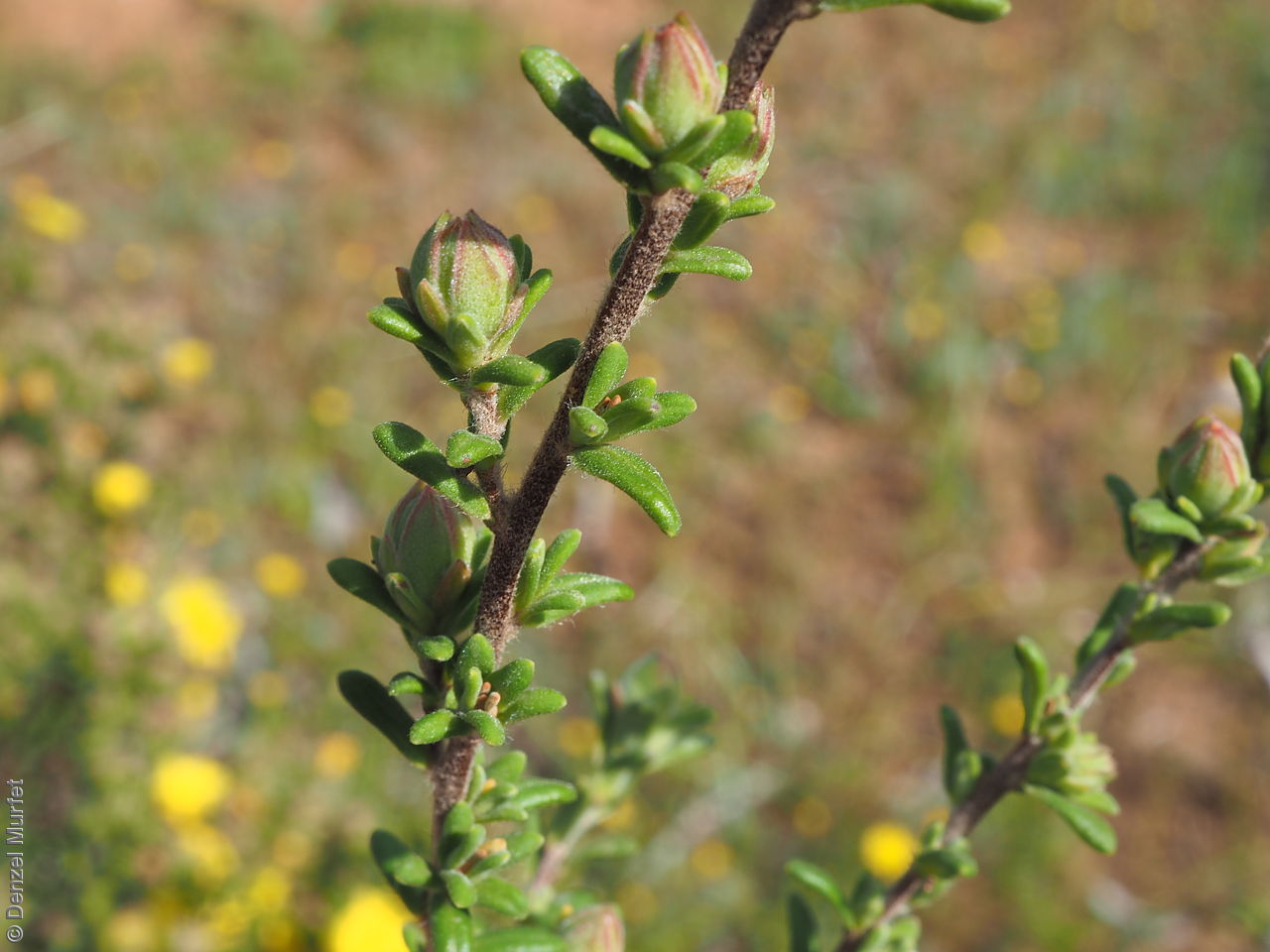
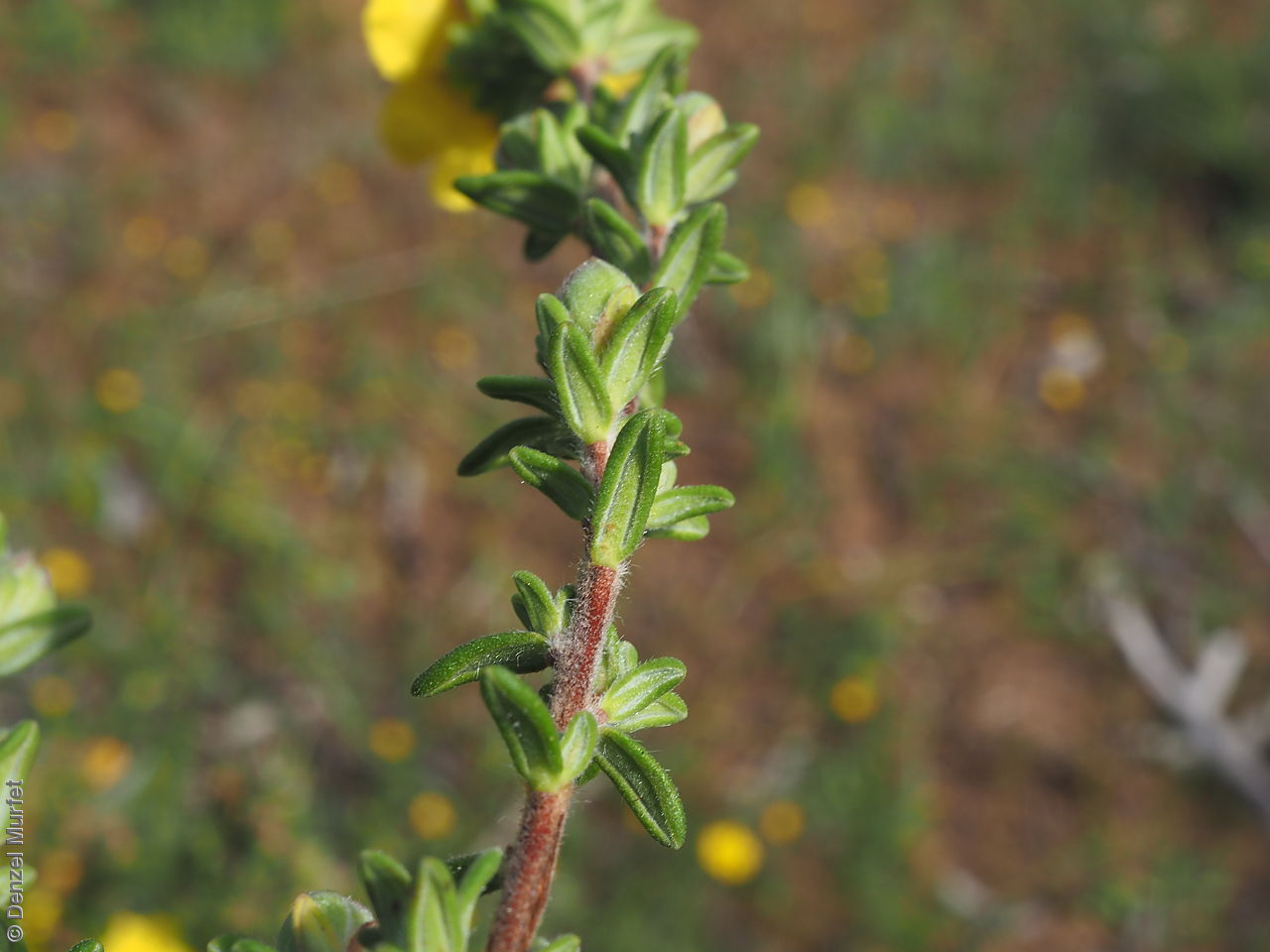
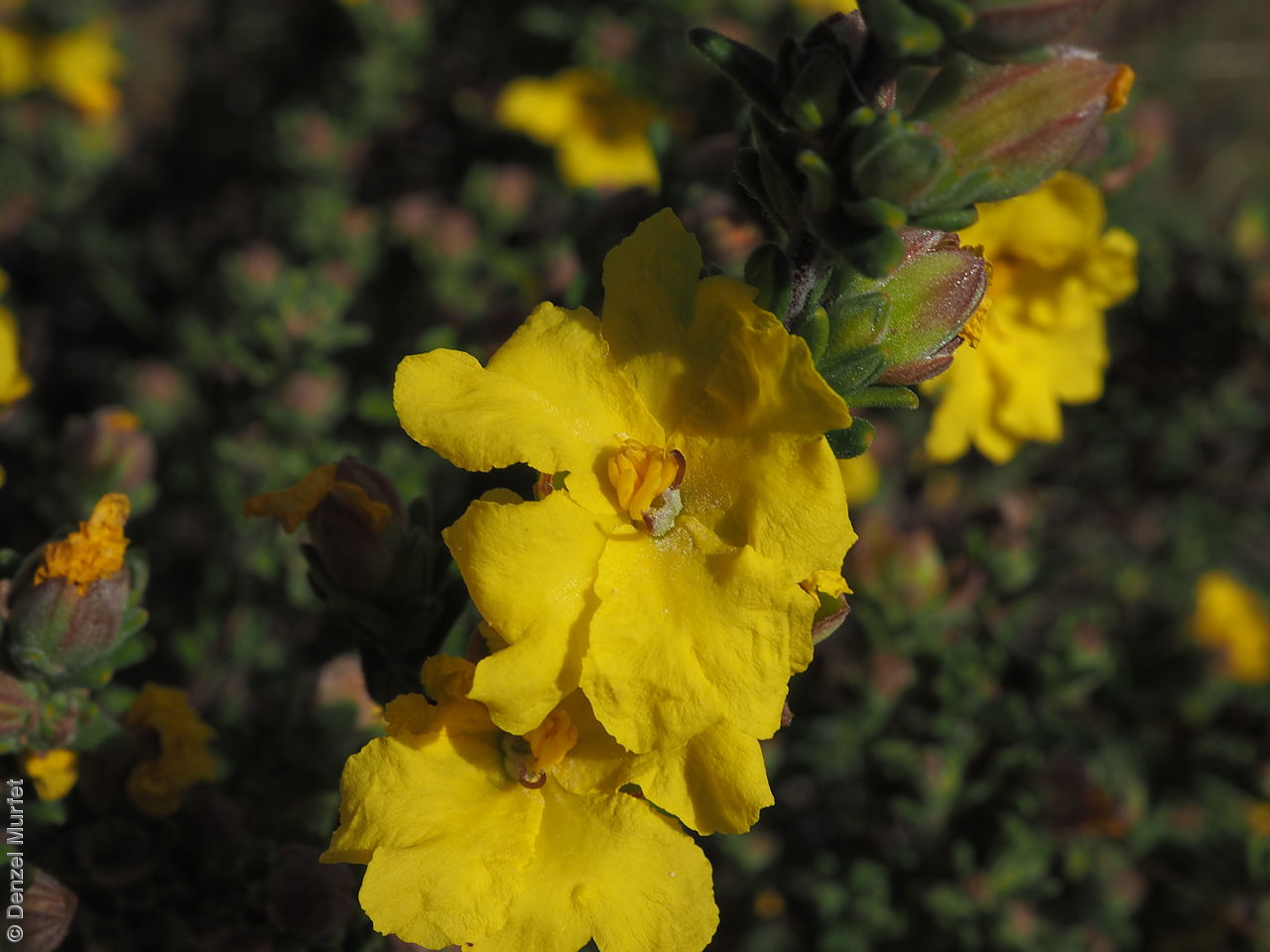
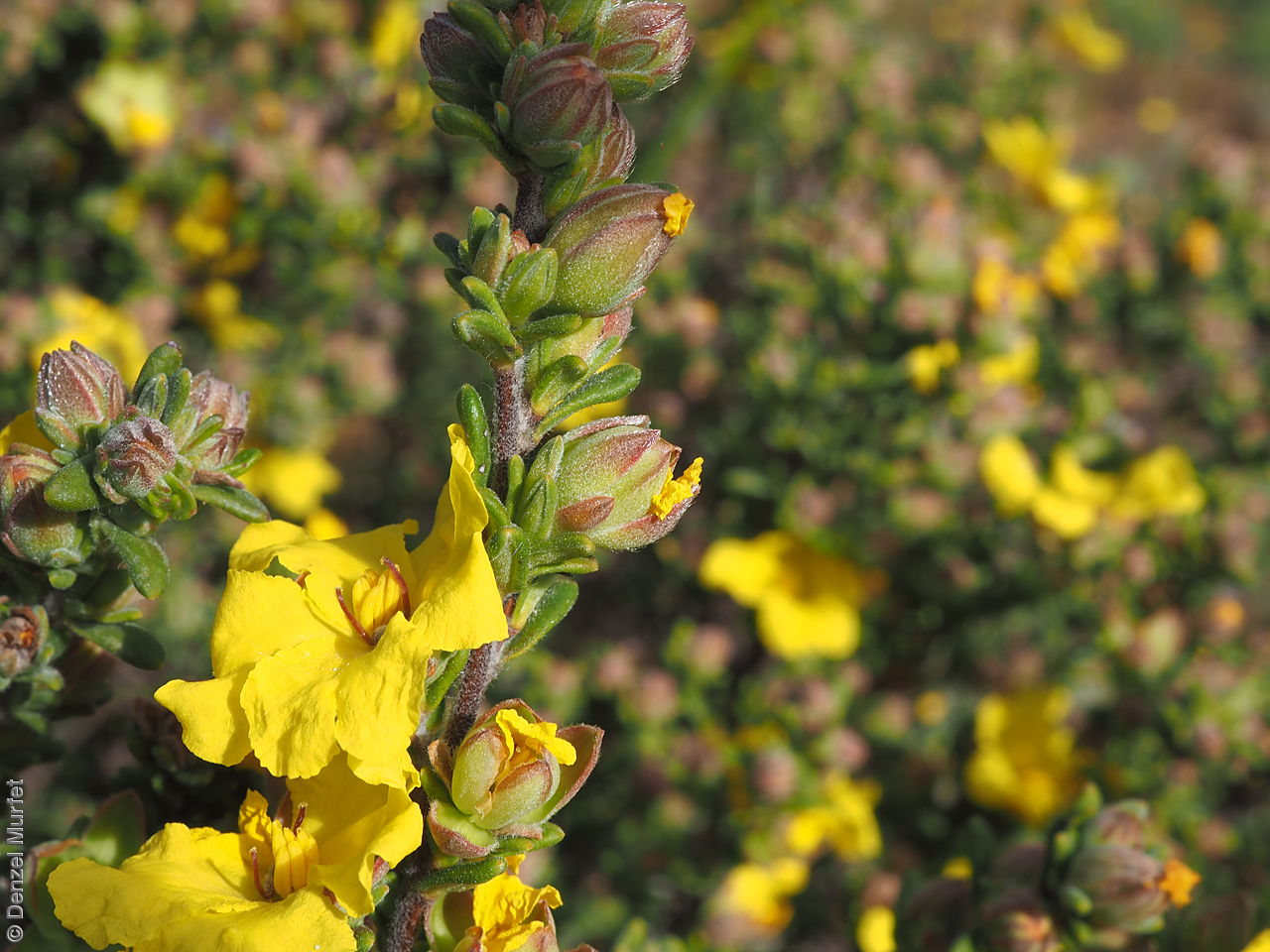
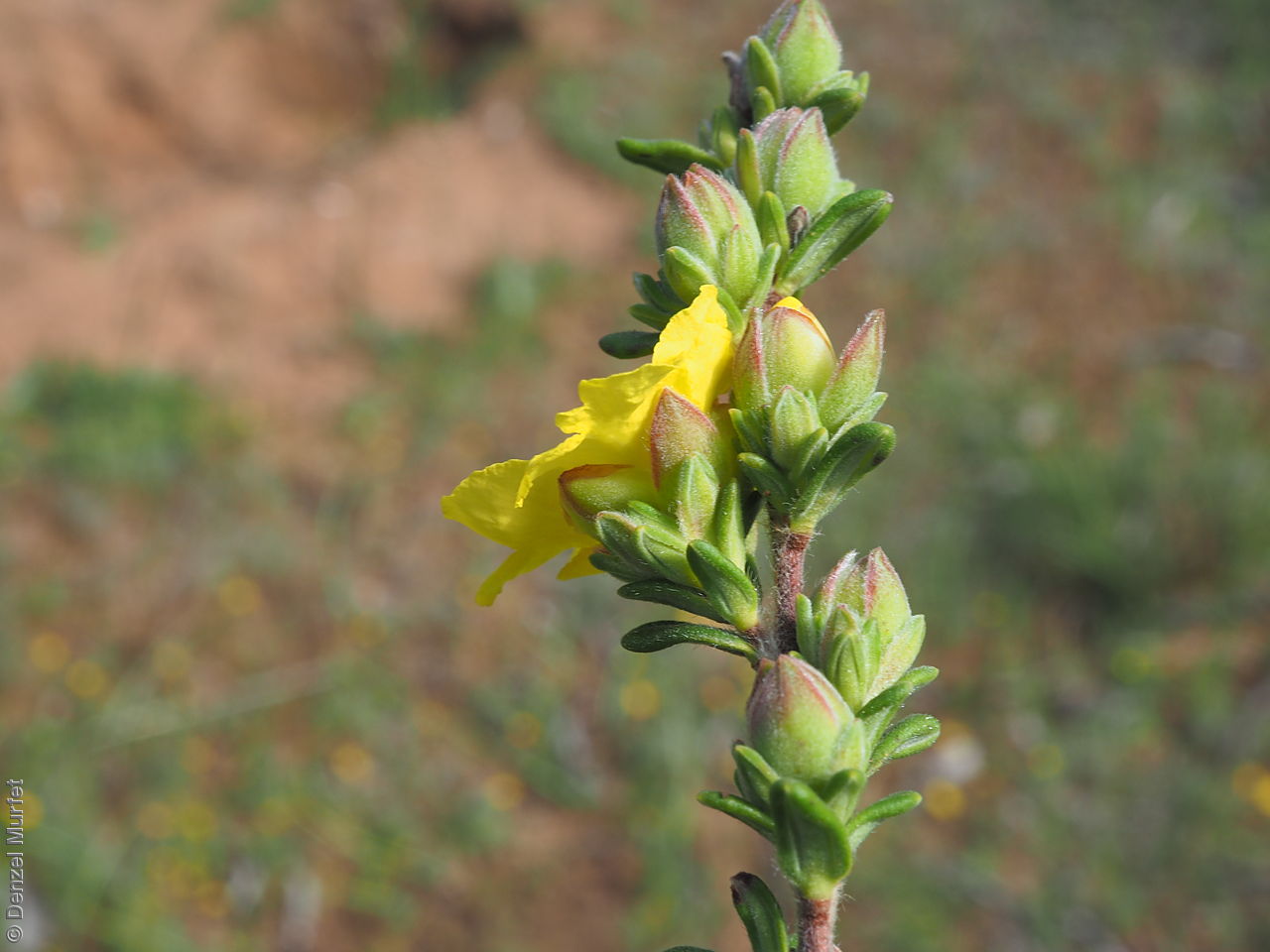
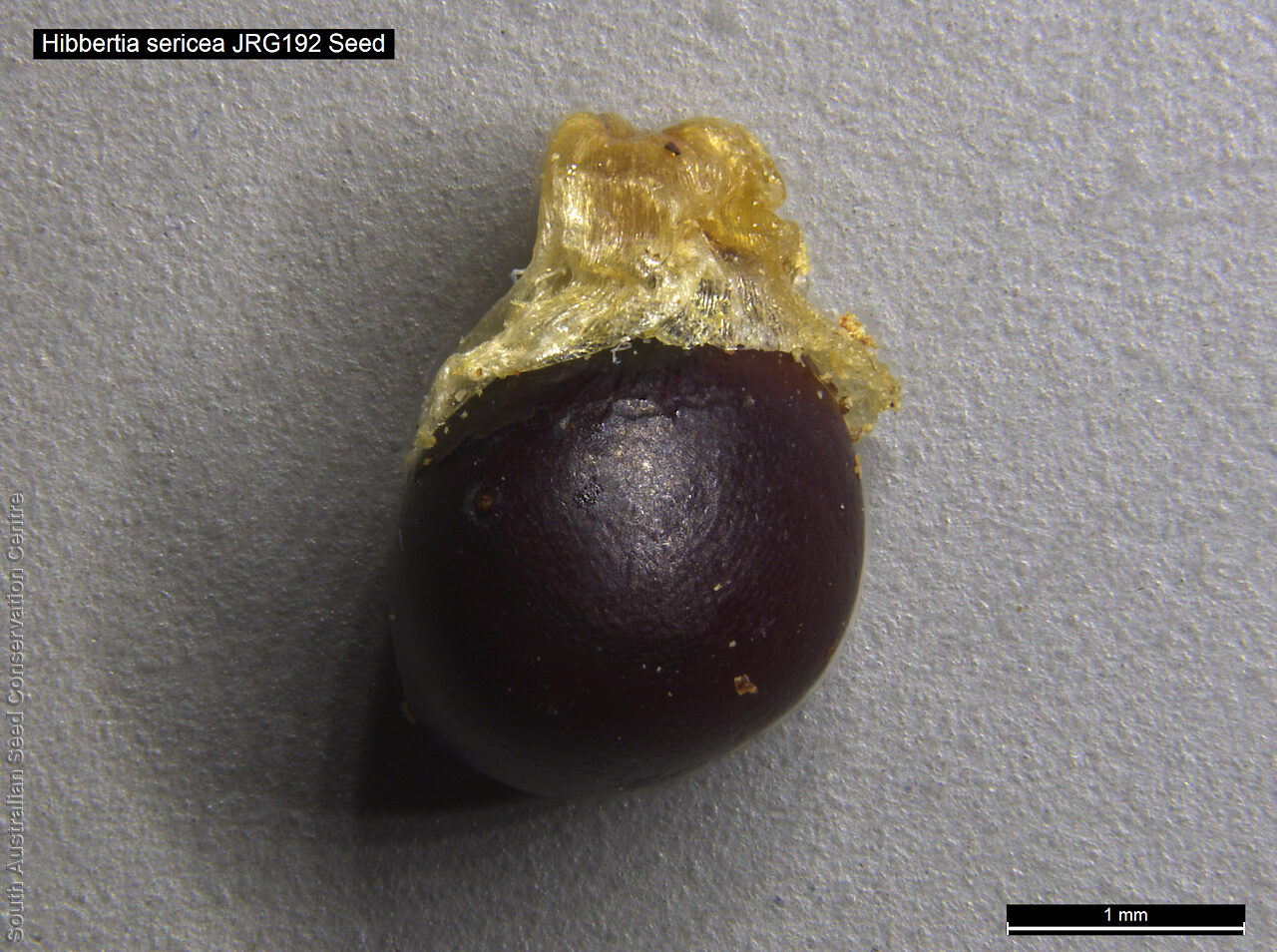
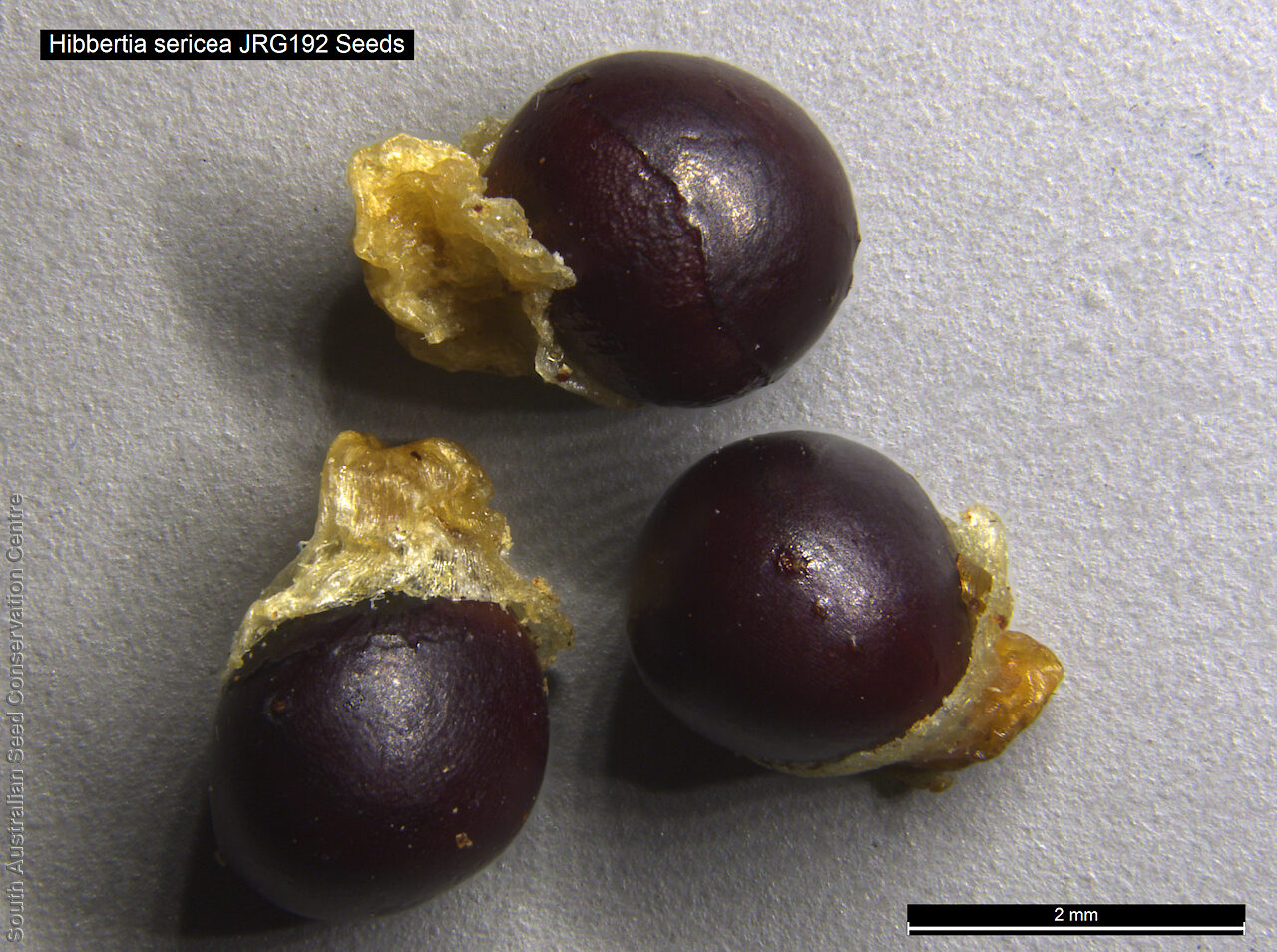

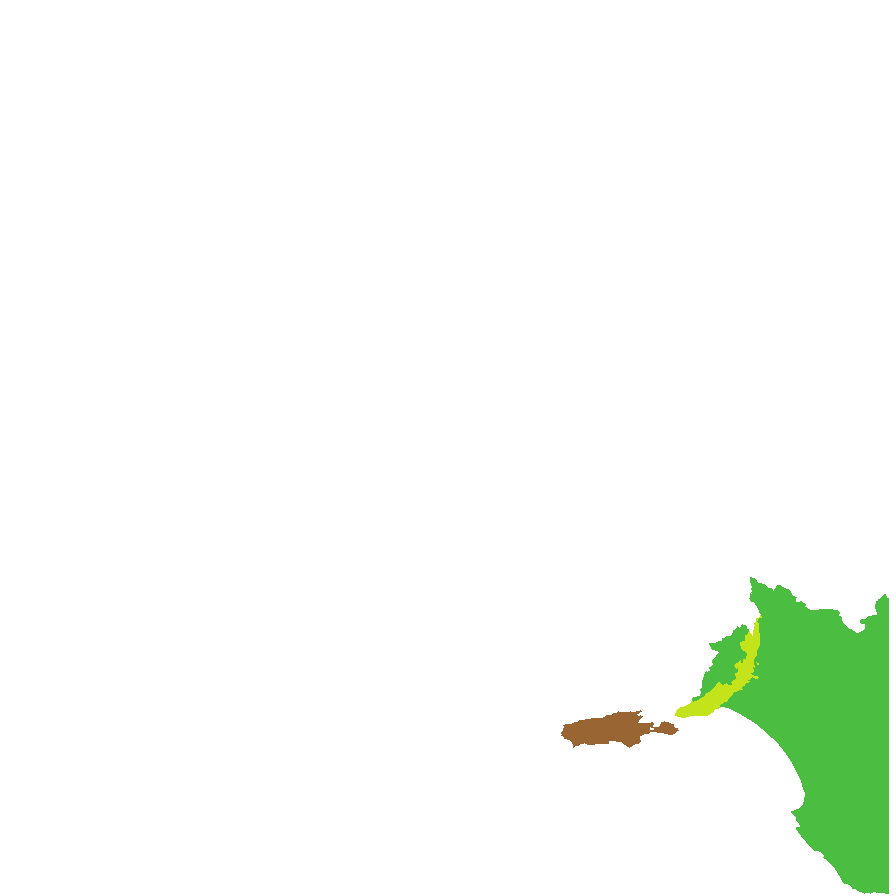
Botanical art
Prior names
Hibbertia sericea var. scabrifolia
Pleurandra sericea
Hibbertia densiflora
Common names
Silky Guinea-flower
Etymology
Hibbertia, named after George Hibbert (1757-1837), a London merchant who maintained a private botanic garden at Chelsea. Sericea, from the Latin 'sericeus' meaning silk, referring to the softly stellate-tomentose leaves.
Distribution and status
Found on southern Yorke Peninsula, Kangaroo Island, Mount Lofty Ranges and the South-east in South Australia, growing on sandy soils associated with mallee woodland. Also found in Queensland, Victoria and Tasmania. Native. Common in South Australia. Common in the other States.
Herbarium regions: Murray, Yorke Peninsula, Southern Lofty, Kangaroo Island, South Eastern, Green Adelaide
AVH map: SA distribution map (external link)
Plant description
Small procumbent to erect shrubs, often under 50 cm high. Leaves linear to lanceolate or oblanceolate to 30 mm long and 5 mm wide; silky or softly stellate-tomentose on both surfaces, or with the upper surface scabrous. Flowers yellow to 30 mm across; terminal or on short branches; petals deeply notched. Flowering from August to December. Fruits are brown ellipsoid capsule.
Seed collection and propagation
Collect seeds between October and December. Collect mature capsules, those that are turning a pale straw-colour and contain brown seeds. Place the capsules in a tray and leave to dry for one to two weeks. Then rub the capsules gently by hand to dislodge the seeds. Use a sieve to separate the unwanted material. Store the seeds with a desiccant such as dried silica beads or dry rice, in an air tight container in a cool and dry place. This genus tend to have low seed viability. This species has morpho-physiological dormancy and can be difficult to germinate.